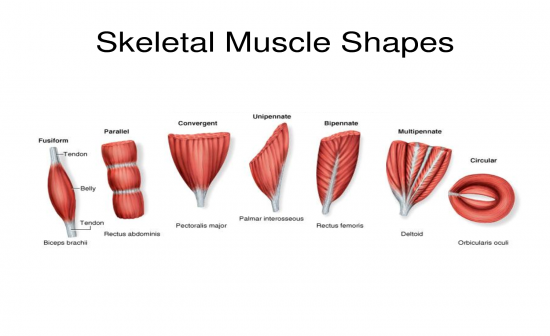Cards In This Set
| Front | Back |
|
Factors that determine the rate of contraction of muscle
|
|
|
How can you classify muscles
|
|
 What are the shapes of muscles  |
|
|
Parallel Muscles
|
Axes of fascicles run parallel to the axes of the musclespindle shaped or strap like, will have a central body (belly or gaster) when parallel muscle contracts it gets smaller and larger in diameter especially at the belly Ex.. Biceps and sartorius
|
|
Pennate muscles
|
feather like, fascicles are short and oblique attached to a central tendonproduces more tension than parallel muscles
|
|
Convergent muscles
|
Fan shaped forced directed to a point called a RAPHE(tendon, aponuroisis, or collogen fibers)can pull in different dirtections since each section can change directions
|
|
Circular or sphincter
|
Contraction acts to close a hole
|
|
Origin
|
Immovable end of muscle to bone
|
|
Insertion
|
Moveable end of muscle to bone
|
|
Functional groups of muscles
|
|
|
Agonist
|
|
|
Antagonist
|
|
|
Synergists
|
|
|
Fixator
|
|
|
Lever
|
A rigid bar that moves on a fixed pointlike bones in the body
|



